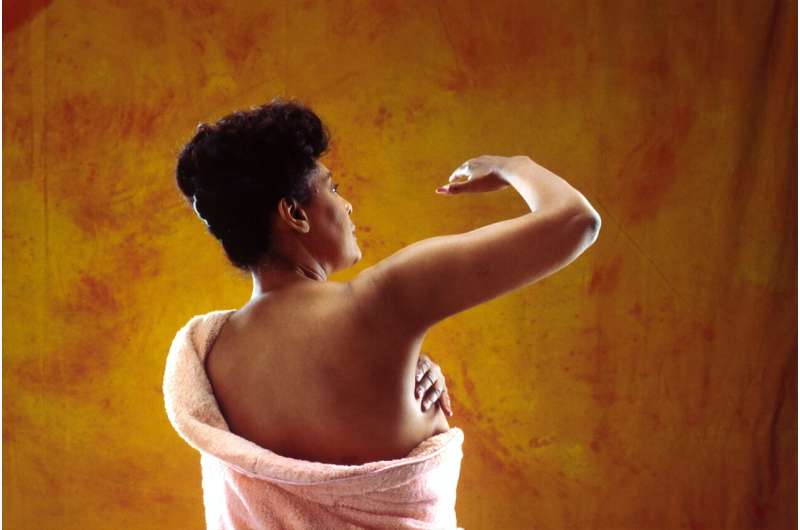
As a cancer nurse in the U.S. Army for more than 29 years, Elizabeth Anderson saw firsthand how chemotherapy, radiation and surgeries impact the body’s lymphatic system, putting breast cancer survivors at greater risk for developing lymphedema, a chronic condition of swelling that may occur after surgical removal, chemotherapy treatment, or irradiation of lymph nodes.
Now a lymphedema therapist in San Antonio, Texas—an area with a large Hispanic population—and post-doctoral fellow at the MU Sinclair School of Nursing, Anderson recently conducted a study to better understand how Hispanic women returned to work or made adjustments in their daily life while managing lymphedema after breast cancer treatment. When interviewing survivors about their return-to-work experiences and adjustments, resiliency was a common theme among the respondents.
“One example was a waitress who, due to the swelling in one of her arms, was unable to continue lifting heavy trays of food with her affected arm,” Anderson said. “So, she started lifting the trays with her other arm, and her supervisor got her a little cart trolley with wheels to help her carry the trays of food to her customers, so these adaptations helped her manage her condition and continue to do the things she wanted to do in life.”
Family support was another popular theme, as the family members of the breast cancer survivors were able to assist in work settings and at home.
“One survivor was a housekeeper and starting taking her niece with her to work, so if there were certain tasks she could no longer do due to her swelling and pain, she could delegate those specific tasks to her niece, which enabled her to keep her job and she was very thankful for the support,” Anderson said. “Another survivor mentioned teaching her son how to clean the house because she could not do it anymore. She had to learn to let some of those responsibilities go, which was an adjustment because of the pride and sense of responsibility she had always felt in doing the things she needed to do around the house to take care of her family.”
One survivor shared her experience going back to work in a family-owned business that made picture frames and engravings, and certain tasks, such as typing or writing, became challenging at times, but her family members and lymphedema therapist were supportive.
“As lymphedema therapists, we often use compression bandages that reduce swelling in the arms and hands, but the bandages can be pretty bulky and the summer heat is not your friend down here in Texas,” Anderson said. “So we were able to modify the way in which she was bandaged to leave more of her hand exposed so she could go back to doing some of those things, so the key message is to tailor interventions according to the individual.”
Anderson has several family members, including her mom, who were treated for breast cancer, and lymphedema is a chronic condition with no cure that may occur multiple years or even decades after the cancer.
“This work is personal for me, as I want to contribute to the science and research we need to do to help these survivors who develop this condition optimize the quality of life they have after being treated for cancer,” Anderson said. “Whether it is physicians, nurse practitioners, therapists, work colleagues and family members, we all need to do our part to support the breast cancer survivor.”
Anderson said her ultimate goal is to develop interventions and support systems that can help breast cancer survivors manage their lymphedema and continue to do whatever they are most passionate about.
“Advances in medical treatments have helped cancer survivors live longer, sometimes decades longer,” Anderson said. “By identifying the challenges and adaptations these women use to self-manage their chronic condition, we can support them every step of the way, and education will play a big part moving forward.”
Source: Read Full Article
